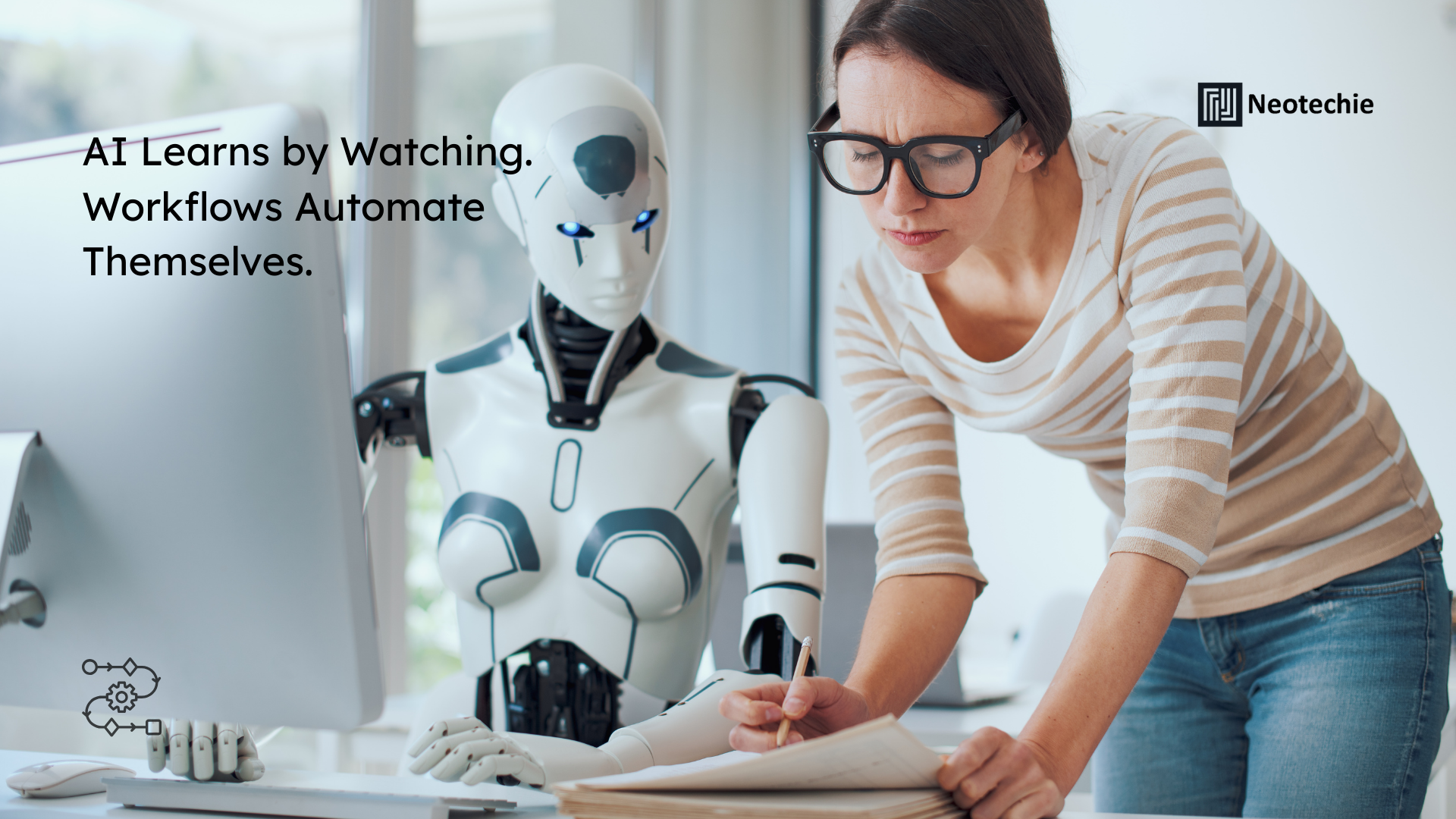Behavioral Analytics: Letting AI Watch and Learn to Automate Workflows
Understanding Behavioral Analytics in Automation
Traditional automation often relies on predefined rules and structured workflows, limiting its adaptability and effectiveness. Behavioral analytics in automation leverages AI to observe, understand, and analyze user interactions within software systems. By learning from human behavior, AI can identify repetitive tasks, optimize workflows, and recommend automation opportunities that might not be apparent through conventional analysis.
Behavioral analytics uses machine learning, pattern recognition, and advanced data processing to monitor clicks, navigation paths, keystrokes, and decision points. The AI interprets this information to provide actionable insights for workflow optimization, enabling businesses to automate intelligently and proactively. Over time, it identifies trends and recurring inefficiencies that humans often overlook.
What Behavioral Analytics Entails
Behavioral analytics in workflow automation encompasses:
- User Interaction Monitoring: AI tracks how employees interact with software interfaces, identifying common sequences, frequent actions, and workflow variations. This allows organizations to see the real path of work and detect hidden bottlenecks.
- Pattern Recognition: Machine learning models detect repetitive and time-consuming tasks suitable for automation. The AI can recognize variations in behavior and determine optimal approaches to handle exceptions.
- Task Prioritization: The system determines which processes have the highest impact and should be automated first to maximize efficiency, cost savings, and ROI. This helps leadership focus resources on the most value-driving areas.
- Continuous Learning: The AI adapts as workflows change, learning from new behaviors, exceptions, and evolving patterns, refining automation strategies to remain effective in dynamic environments.
By understanding human behavior in software systems, businesses can create automation solutions that are precise, effective, and scalable, enabling adaptive, long-term process improvement.
Why Behavioral Analytics is Critical for Businesses
1. Discover Hidden Automation Opportunities
Many repetitive or high-volume tasks are invisible to traditional process mapping. Behavioral analytics identifies these hidden opportunities by monitoring real-world interactions, allowing businesses to automate tasks that were previously overlooked. This leads to improved productivity and reduced operational costs.
2. Optimize Workflow Efficiency
Analyzing user behavior helps organizations identify bottlenecks, redundant steps, and inefficient practices. Insights from behavioral analytics enable redesigning workflows, resulting in faster processing, fewer errors, and enhanced operational performance. It empowers managers with data-driven visibility into daily operations.
3. Enhance Employee Productivity
Automation powered by behavioral analytics relieves employees from repetitive, mundane tasks. This allows teams to focus on high-value work, problem-solving, and innovation, boosting morale and job satisfaction while increasing overall productivity.
4. Support Data-Driven Decision-Making
Behavioral analytics provides leaders with a granular view of how work is performed across systems. Insights derived from real interactions guide resource allocation, process redesign, and digital transformation initiatives, enabling informed and strategic decision-making.
5. Enable Adaptive, Scalable Automation
As workflows evolve, behavioral analytics ensures that automation adapts accordingly. AI continuously learns from interactions and exceptions, updating automation scripts in real-time. This capability ensures scalability and reliability, allowing businesses to expand automation without constant manual adjustments.
How Behavioral Analytics Works in Workflow Automation
Step 1: Monitoring User Actions
AI observes clicks, typing patterns, navigation flows, and software interactions across multiple systems, capturing comprehensive data about how employees perform their tasks. This visibility forms the foundation for identifying inefficiencies and automation opportunities.
Step 2: Data Processing and Pattern Analysis
Machine learning algorithms analyze interaction data to identify repetitive, high-effort, or error-prone tasks. Patterns emerge, highlighting optimal targets for automation. AI also detects anomalies and evolving behaviors to anticipate future process challenges.
Step 3: Workflow Optimization Recommendations
Behavioral insights are converted into actionable recommendations. Automation scripts are designed to handle identified tasks, streamline workflows, and reduce friction, ensuring that the most impactful processes are addressed first.
Step 4: Deployment of Intelligent Automation
RPA or AI-driven automation bots are deployed to perform identified tasks, replicating human actions with precision. This results in consistent, error-free task execution, reduced operational workload, and faster cycle times.
Step 5: Continuous Feedback and Improvement
The system continuously monitors new behaviors, evaluates automation effectiveness, and refines workflows. Continuous learning ensures that automation evolves alongside organizational changes, maintaining high efficiency and relevance over time.
How Behavioral Analytics Drives Business Transformation
- From Manual Observation to Intelligent Automation: Human behaviors are transformed into automated, efficient processes.
- From Inefficiency to Optimization: Workflows are continually refined based on real usage data, enhancing operational performance and reducing costs.
- From Fragmented Insight to Enterprise Visibility: Organizations gain a clear, actionable understanding of how work flows across teams and systems, improving coordination and decision-making.
- From Static Automation to Adaptive Systems: Automation dynamically adjusts to evolving behaviors and requirements, ensuring long-term scalability and resilience.
Behavioral analytics enables businesses to optimize operations, improve employee productivity, and enhance agility, making digital transformation measurable and sustainable.
Why Businesses Can’t Ignore Behavioral Analytics
- Hidden, repetitive tasks can drain resources and productivity.
- Manual workflow optimization is time-consuming, error-prone, and unsustainable.
- Scaling automation without understanding actual behavior risks inefficiency and process breakdowns.
- Adaptive, data-driven automation ensures continuous improvement, high ROI, and employee satisfaction.
Behavioral analytics ensures organizations remain efficient, agile, and future-ready.
How Neotechie Helps
At Neotechie, we harness behavioral analytics to design intelligent automation solutions that align with how employees actually work. Our services include:
- User interaction monitoring and analysis to identify high-impact automation opportunities.
- Creation of AI-driven, adaptive automation scripts that replicate human actions efficiently.
- Optimization of workflows and processes based on real-time behavioral insights.
- Integration with existing systems to ensure seamless, scalable automation deployment.
Neotechie transforms manual, repetitive processes into intelligent, adaptive automation solutions that enhance productivity, reduce costs, and drive digital transformation.
Call to Action
Unlock the hidden potential in your workflows. Partner with Neotechie to implement AI-powered behavioral analytics and automate intelligently for efficiency and scalability.
#BehavioralAnalytics #AIinAutomation #WorkflowOptimization #RPA #BusinessTransformation #SmartAutomation #MachineLearning #ProcessEfficiency #DigitalInnovation #AdaptiveAutomation

